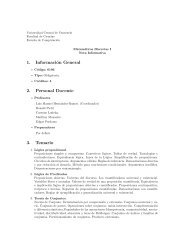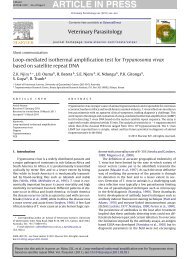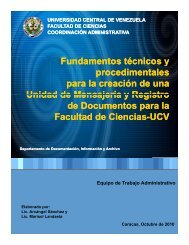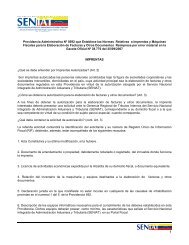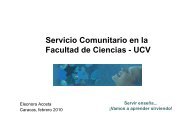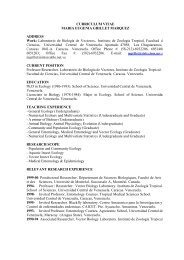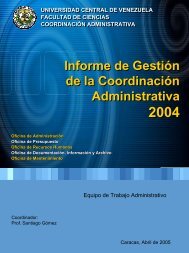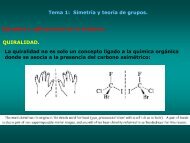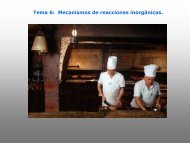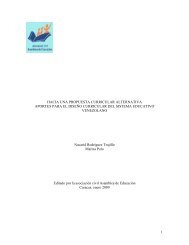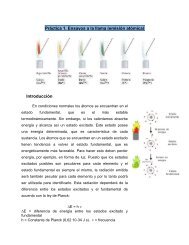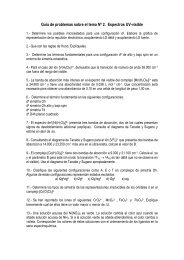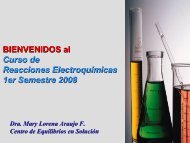Collecting and Preserving
Collecting and Preserving
Collecting and Preserving
- No tags were found...
Create successful ePaper yourself
Turn your PDF publications into a flip-book with our unique Google optimized e-Paper software.
Bradbury & Morrison 1975; Clifford et al. 1977; Evans etal. 1964; Galtsoff et al. 1937; Hurd 1954; Johnson 1950;Johnson & Taylor 1955; Johnson et al. 1957; Lumsden1958; Minter 1961; Mulhern 1942; Scholdt & Neri 1974;Taylor 1962a; Turnbull & Nicholls 1966; White 1964;Weins & Burgess 1972; Williams 1973; Woke 1955.1.7 Beating SheetsA beating sheet should be made of durable cloth,preferably white, attached to a frame about 1 meter square,with two pieces of doweling or other light wood crossingeach other <strong>and</strong> fitted into pockets at each corner of thecloth. An ordinary light-colored umbrella also may be usedas a beating sheet. Place the beating sheet or umbrellaunder a tree or shrub <strong>and</strong> sharply beat the branches orfoliage with a club or stick. Specimens will fall onto thesheet <strong>and</strong> may be removed from the light-colored materialby h<strong>and</strong> or with forceps, a moistened brush, or an aspirator.Locating specimens on the sheet is sometimes aproblem because of leaves or other unwanted materialdropping onto the sheet. Watching for movement will helplocate specimens, as well as tilting the sheet so that thedebris is displaced or even allowed to fall off, with theinsects <strong>and</strong> mites left clinging to the cloth.Techniques <strong>and</strong> Toolsdislodge the mites, which will fall through the screen <strong>and</strong>into the vial below.Another type of sifter employs two hoops of heavymetal, each with a h<strong>and</strong>le. A long (3-4 ft.) canvas bag issewn to the top hoop. The bag is left open at the end <strong>and</strong>secured with a cord or twist-tie. About 1 foot down in thebag, the second hoop is sewn to the canvas <strong>and</strong> to this isattached a metal screen. Coarse debris is loaded into thetop <strong>and</strong> sifted down to the end of the canvas bag. Sifteddebris is then ready to be processed by one of the followingseparators or extractors.References: Martin 1977.1.9 Separators <strong>and</strong> ExtractorsSomewhat similar to the sifter are various devicesdesigned to separate or extract live specimens fromsubstances in which they may be found, such as leaf mold<strong>and</strong> other kinds of vegetable matter, shore detritus, dung,even net sweepings that include so much foreign matterthat it is difficult to pick out the insects. These devicesusually depend on some physical aid such as light, heat, ordryness to impel the insects to leave the foreign matter.Beating sheets are especially useful in collectingbeetles, true bugs, <strong>and</strong> larval Lepidoptera. Beating may bethe best collecting technique when the weather has turnedcold, or early <strong>and</strong> late in the day, when normally activeinsects seek shelter in vegetation <strong>and</strong> are otherwisedifficult to detect.One of the simplest such devices is the sweepingseparator (fig. 7). This is simply a carton or wooden boxwith a tight-fitting lid. Near the top of the box on one sideis inserted a glass jar. If the jar is made with a screw top, ahole of proper diameter cut in the side of the carton willpermit the jar to be screwed onto it. The cover ring,A ‘ground cloth’ also is used in sampling crop fields(see Rudd & Jensen 1977).1.8 SiftersSifters are used to collect insects <strong>and</strong> mites that livein ground litter, leaf mold, rotting wood, mammal <strong>and</strong> birdnests, fungi, shore detritus, lichens, mosses, <strong>and</strong> similarmaterial. Sifters are especially useful for winter collectingto pick up hibernating specimens. Almost any containerwith a wire-mesh screen bottom will serve as a sifter. Thesize of the mesh depends on the size of the specimenssought. For general purposes, screening with 2.5-3 meshesper centimeter is satisfactory. To use the sifter, place thematerial to be sifted into the container <strong>and</strong> shake it gentlyover a white pan or piece of white cloth. As the insects <strong>and</strong>mites fall onto the cloth, they may be collected withforceps, a brush, or an aspirator.A similar method is used chiefly to collect mitesfrom foliage. Using a sifter of 20-mesh screen (about 8 percentimeter) with a funnel underneath that leads to a smallvial, beat pieces of vegetation against the screen toFig. 6. Separation bag11



